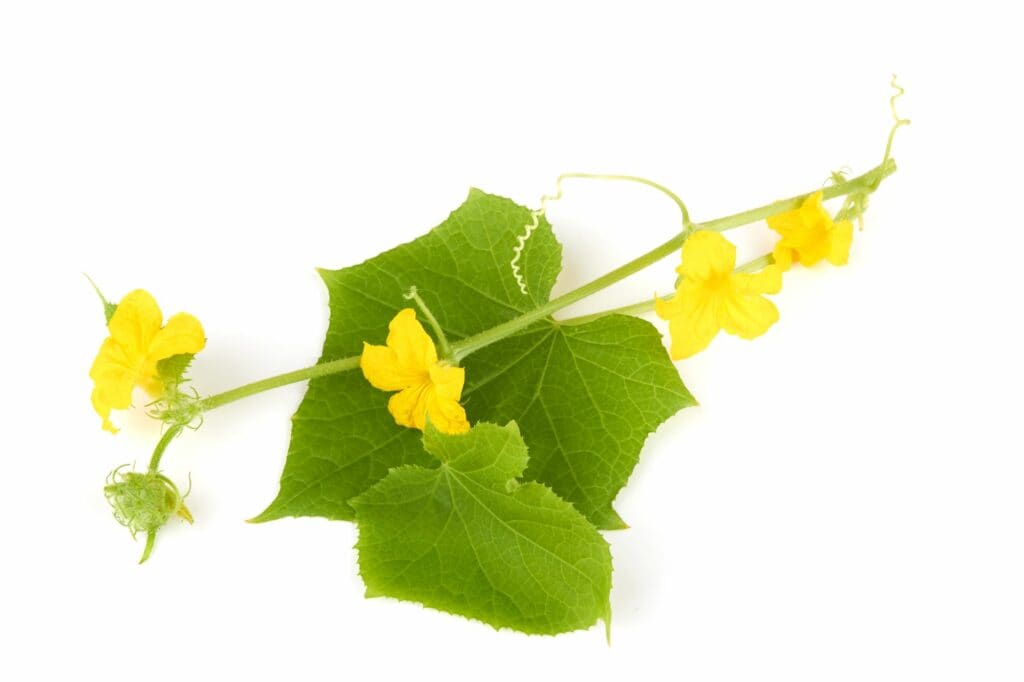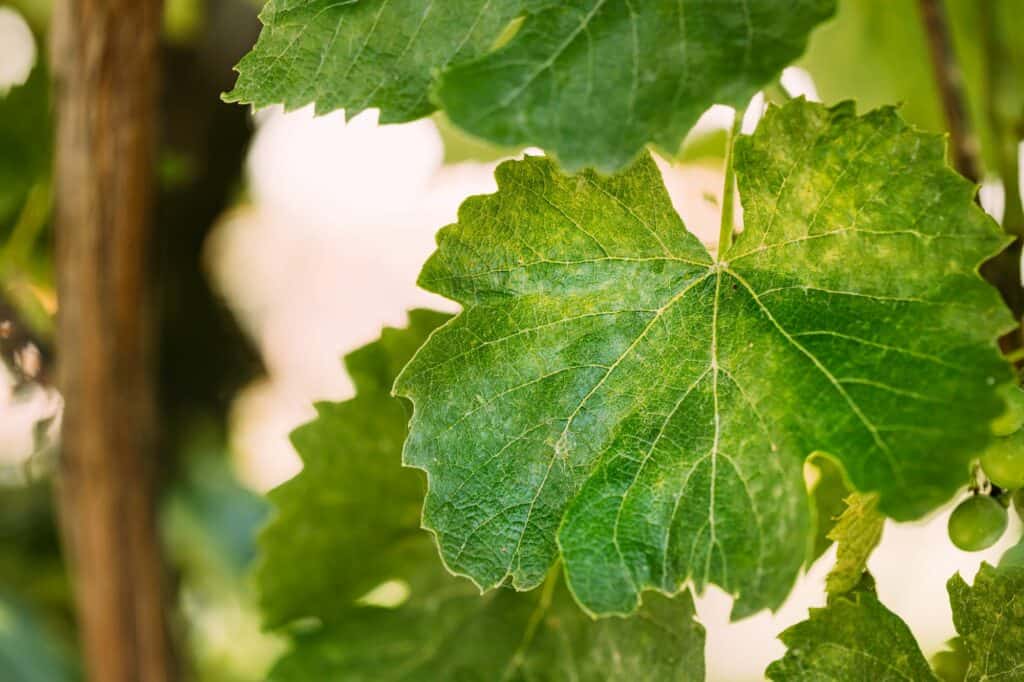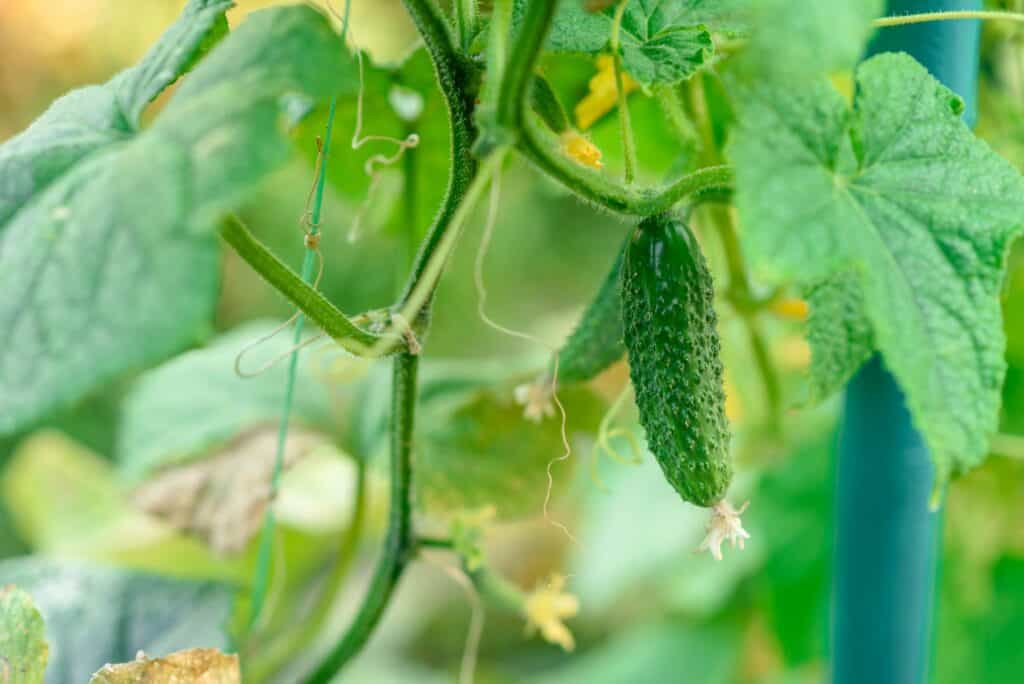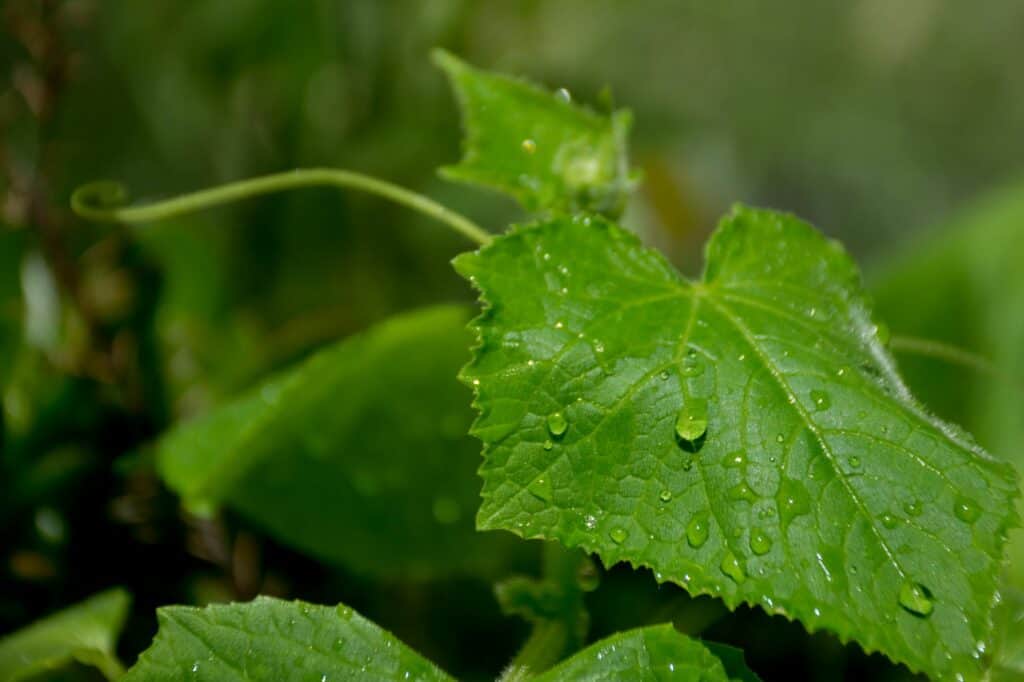White spots on cucumber leaves are a common problem for gardeners. These spots can be caused by a variety of factors, including environmental conditions, pests, and diseases.
Understanding the causes of white spots on cucumber leaves is essential for preventing and treating the problem.
One of the most common causes of white spots on cucumber leaves is powdery mildew. This fungal disease can quickly spread throughout a garden and cause significant damage to plants.
Other common causes of white spots on cucumber leaves include bacterial and viral infections, as well as damage caused by pests such as spider mites and aphids.
Key Takeaways
- White spots on cucumber leaves can be caused by environmental conditions, pests, and diseases.
- Powdery mildew is a common fungal disease that causes white spots on cucumber leaves.
- Preventing and treating white spots on cucumber leaves involves identifying the underlying cause and implementing appropriate strategies.
Cucumber Plant Leaves Turning Brown: 3 Causes, Solutions & Best Care Tips
Cucumber Leaves Turning Yellow with Brown Spots – 7 Causes, Solutions & Best Care Tips

Understanding White Spots on Cucumber Leaves
White spots on cucumber leaves are a common problem that gardeners face. These spots are usually caused by fungal diseases, such as powdery mildew, which can thrive in warm, humid conditions.
However, there are several other factors that can contribute to the development of white spots on cucumber leaves.
One of the main causes of white spots on cucumber leaves is powdery mildew. This fungal disease appears as a white, powdery coating on the leaves, stems, and fruit of the cucumber plant.
It makes a start on the lower shaded leaves, feeds on the plant nutrients, spreads across the leaf surface, disperses to other leaves, blocks sunlight that prevents photosynthesis, and ultimately starves the cukes to death. At the earliest sign of white spots on any part of a cucumber plant, intervention is needed.
Another cause of white spots on cucumber leaves is downy mildew, which is another fungal infection. This disease is characterized by yellow or brown spots on the leaves, as well as a white, downy growth on the undersides of the leaves.
It can also cause the leaves to curl and become distorted, which can further reduce the plant’s ability to photosynthesize.
Bacterial diseases can also cause white spots on cucumber leaves. One example is angular leaf spot, which causes brown, angular lesions on the leaves, often with yellow chlorotic halos.
Young spots are water-soaked and older spots have holes in the center. Scab can cause similar leaf symptoms. Bacterial infections can be difficult to control, so prevention is key.
Environmental factors such as high humidity, poor air circulation, and overcrowding of plants can also contribute to the development of white spots on cucumber leaves.
These factors create a favorable environment for fungal and bacterial growth, which can lead to the development of white spots on the leaves.
To prevent white spots on cucumber leaves, it is important to maintain good plant hygiene, such as removing infected leaves and debris from around the plants. It is also important to ensure that the plants have adequate air circulation and are not overcrowded.
Fungicides can be used to treat the white spots on cucumbers if they are caught early. The purpose of fungicides is to prevent the fungi spores from germinating.
There are a variety of fungicides that you can choose from. Just make sure it is appropriate for cucumbers and powdery mildew.

What Causes White Spots on Cucumber Leaves
Cucumber plants are susceptible to a variety of diseases and pests that can cause white spots to appear on their leaves.
In this section, we will discuss some of the most common causes of white spots on cucumber leaves and how to identify and treat them.
- Powdery Mildew
Powdery mildew is a fungal disease that causes white, powdery spots to appear on the leaves of cucumber plants. It is a common problem in humid climates and can be spread by wind or water.
Powdery mildew can weaken the plant and reduce its yield if left untreated. To prevent powdery mildew, it is important to keep the plants dry and well-ventilated. If powdery mildew is already present, it can be treated with a fungicide.
- Bacterial Wilt
Bacterial wilt is a disease caused by a bacterium that affects cucumbers and other plants in the cucurbit family. It causes the leaves to wilt and turn yellow, and can also cause white spots to appear on the leaves.
The bacterium is spread by cucumber beetles and other insects. To prevent bacterial wilt, it is important to control cucumber beetles and other pests. Infected plants should be removed and destroyed to prevent the disease from spreading.
- Anthracnose
Anthracnose is a fungal disease that causes circular, sunken spots to appear on the leaves of cucumber plants. The spots may be yellow or brown, and may have a white or gray center.
The disease is spread by water and can be prevented by keeping the plants dry and well-ventilated. Infected plants should be removed and destroyed to prevent the disease from spreading.
- Spider Mites
Spider mites are tiny pests that feed on the leaves of cucumber plants. They can cause white spots to appear on the leaves, as well as yellowing and wilting.
Spider mites thrive in hot, dry conditions and can be prevented by keeping the plants well-watered and well-ventilated. Infected plants can be treated with insecticidal soap or other pesticides.
- Leafhoppers
Leafhoppers are small, winged insects that feed on the sap of cucumber plants. They can cause white spots to appear on the leaves, as well as stunted growth and wilting.
Leafhoppers can be prevented by controlling weeds and other plants that attract them. Infected plants can be treated with insecticidal soap or other pesticides.
- Thrips
Thrips are tiny, winged insects that feed on the leaves of cucumber plants. They can cause white spots to appear on the leaves, as well as stunted growth and wilting.
Thrips can be prevented by controlling weeds and other plants that attract them. Infected plants can be treated with insecticidal soap or other pesticides.
Environmental Factors Contributing to White Spots
White spots on cucumber leaves can be caused by a variety of environmental factors. Understanding these factors can help gardeners prevent and treat this issue. Here are some of the most common environmental factors that contribute to white spots on cucumber leaves:
Humidity and Temperature
High humidity and warm temperatures create ideal conditions for fungal diseases like powdery mildew, which can cause white spots on cucumber leaves. It is important to maintain moderate humidity levels and avoid exposing cucumber plants to extreme temperatures.
Watering Practices
Overwatering or underwatering can stress cucumber plants and make them more susceptible to diseases that cause white spots.
It is important to water cucumber plants regularly, but not too frequently. Gardeners should also avoid getting water on the leaves, as this can create a moist environment that promotes fungal growth.
Air Circulation
Poor air circulation can also contribute to the development of powdery mildew and other fungal diseases.
Gardeners should space cucumber plants out properly and prune them regularly to promote air flow.
Sunlight Exposure
Cucumber plants need plenty of sunlight to grow and thrive, but too much direct sunlight can stress them and make them more susceptible to diseases.
Gardeners should provide cucumber plants with partial shade during the hottest part of the day to prevent sunburn and other issues.

Impact of White Spots on Cucumber Plants
White spots on cucumber leaves can have a significant impact on the plant’s growth and fruit quality. In this section, we will discuss the effects of white spots on cucumber plants.
Effect on Photosynthesis
White spots on cucumber leaves can block sunlight, which is essential for photosynthesis. Photosynthesis is the process by which plants convert sunlight into energy.
When the leaves are covered with white spots, they cannot absorb enough sunlight, which can lead to a reduction in the plant’s energy production. As a result, the plant may produce fewer fruits.
Stunted Growth
White spots on cucumber leaves can also lead to stunted growth. The spots can prevent the leaves from absorbing enough nutrients and water, which are both essential for the plant’s growth.
As a result, the plant may not grow as tall or produce as many leaves as it should. Stunted growth can also affect the plant’s ability to produce fruits.
Fruit Quality
White spots on cucumber leaves can also affect the quality of the fruit. If the plant is not producing enough energy due to blocked sunlight, the fruit may not be as sweet or juicy as it should be.
Additionally, the spots can also attract pests and diseases, which can further reduce the quality of the fruit.
In summary, white spots on cucumber leaves can have a significant impact on the plant’s growth and fruit quality.
The spots can block sunlight, prevent nutrient absorption, and attract pests and diseases. As a result, the plant may produce fewer fruits, have stunted growth, and produce lower quality fruit.
Prevention Strategies for White Spots
Prevention is always better than cure. In the case of white spots on cucumber leaves, it is no different.
By implementing the following prevention strategies, you can reduce the likelihood of your cucumber plants developing powdery mildew.
- Proper Spacing and Pruning
Proper spacing and pruning of cucumber plants can help increase air circulation and reduce humidity levels around the plants. This can help prevent the growth and spread of powdery mildew. Cucumber plants should be spaced at least 18-24 inches apart and pruned to remove any excess foliage.
- Use of Resistant Varieties
Using resistant cucumber varieties can help prevent the occurrence of powdery mildew. Resistant varieties have been bred to be less susceptible to powdery mildew and other diseases. Some examples of resistant cucumber varieties include ‘Marketmore 76’ and ‘Straight Eight’.
- Soil and Fertilizer Management
Maintaining proper soil pH levels and providing adequate nutrients can help keep cucumber plants healthy and less susceptible to powdery mildew.
Cucumber plants prefer a pH range of 6.0-7.0. Over-fertilization can lead to excessive foliage growth, which can create a humid environment ideal for powdery mildew growth.
- Effective Irrigation Practices
Proper irrigation practices can help prevent the growth and spread of powdery mildew. Drip irrigation systems or soaker hoses can help reduce humidity levels around the plants by keeping the foliage dry.
It is important to avoid overhead watering, which can create a humid environment that is ideal for powdery mildew growth.
- Companion Planting
Companion planting can help prevent the growth and spread of powdery mildew. Some plants, such as marigolds and nasturtiums, have natural fungicidal properties and can help protect cucumber plants from powdery mildew.
Additionally, planting herbs such as basil and oregano can help repel pests that can spread powdery mildew.
By implementing these prevention strategies, you can reduce the likelihood of your cucumber plants developing powdery mildew.

Treatment Options for White Spots
White spots on cucumber leaves are often caused by fungal diseases such as powdery mildew. Fortunately, there are several treatment options available to help prevent the spread of these diseases.
- Use of Fungicides
Fungicides can be used to treat white spots on cucumbers if they are caught early. The purpose of fungicides is to prevent the fungi spores from germinating.
There are a variety of fungicides available, but it is essential to ensure that the product is appropriate for cucumbers and powdery mildew.
Always follow the instructions on the label and apply the fungicide as directed.
- Neem Oil Treatment
Neem oil is an organic treatment option that can be used to treat white spots on cucumber leaves. The oil is extracted from the seeds of the neem tree and has antifungal properties.
To use neem oil, mix one tablespoon of the oil with one gallon of water and spray the mixture onto the affected leaves. Repeat the treatment every seven days until the white spots disappear.
- Horticultural Oil Application
Horticultural oils, such as mineral oil or vegetable oil, can also be used to treat white spots on cucumber leaves.
These oils work by suffocating the fungi spores, preventing them from spreading. To use horticultural oil, mix one tablespoon of the oil with one gallon of water and spray the mixture onto the affected leaves. Repeat the treatment every seven days until the white spots disappear.
- Removal of Infected Leaves
If the white spots are widespread and the plant is severely infected, removing the infected leaves may be necessary.
This will help prevent the spread of the disease to other parts of the plant and nearby plants. Be sure to dispose of the infected leaves in a sealed bag and discard them in the trash. Do not compost infected leaves as this may spread the disease further.
In summary, treating white spots on cucumber leaves involves the use of fungicides, neem oil, horticultural oil, or removal of infected leaves.
Always follow the instructions on the label and apply the treatment as directed. With proper care and treatment, your cucumber plants can recover from powdery mildew and other fungal diseases.
Frequently Asked Questions
What is the main cause of white spots on cucumber leaves?
The main cause of white spots on cucumber leaves is powdery mildew, a fungal disease that thrives in warm, humid conditions. This disease appears as a white, powdery substance on the leaves, stems, and fruit of the cucumber plant. Powdery mildew can weaken the plant and reduce its ability to produce healthy fruit.
How do I treat powdery mildew on cucumbers?
There are several ways to treat powdery mildew on cucumbers. One way is to remove the affected leaves and dispose of them. This can help prevent the disease from spreading to other parts of the plant. Another way is to use a fungicide that is specifically designed to treat powdery mildew. These fungicides can be purchased at most garden centers and should be applied according to the manufacturer’s instructions.
How do I get rid of white spots on my cucumber plants?
To get rid of white spots on cucumber plants, you will need to treat the underlying cause of the problem, which is usually powdery mildew. This can be done by removing the affected leaves, increasing air circulation around the plant, and reducing humidity levels. You can also use a fungicide to treat the powdery mildew.
What do overwatered cucumbers look like?
Overwatered cucumbers may exhibit a number of symptoms, including yellowing leaves, wilting, and stunted growth. The leaves may also become soft and mushy, and the plant may develop a sour smell. If you suspect that your cucumbers are overwatered, it is important to reduce the amount of water you are giving them and allow the soil to dry out between waterings.
Why are cucumber leaves turning white after transplant?
Cucumber leaves may turn white after transplant due to a number of factors, including stress from transplant shock, poor soil quality, and inadequate watering. If your cucumber leaves are turning white after transplant, it is important to address the underlying cause of the problem and provide the plant with the care it needs to thrive.
Are white spots on cucumbers safe to eat?
While white spots on cucumbers are not harmful to humans, they can be a sign of a fungal disease that can weaken the plant and reduce its ability to produce healthy fruit. It is best to remove any affected parts of the plant and take steps to prevent the disease from spreading.

Hey, I’m Lisa and I’ve been an avid gardener for over 30 years. I love writing, talking and living in the garden! Feel free to connect with me on my socials below


